Meet Amanda Lindahl. She’s an expert baker, extrovert, wonderful friend, and a passionate gardener. She works for The Giving Grove, a non-profit organization which is part of the Kansas City Community Gardens.
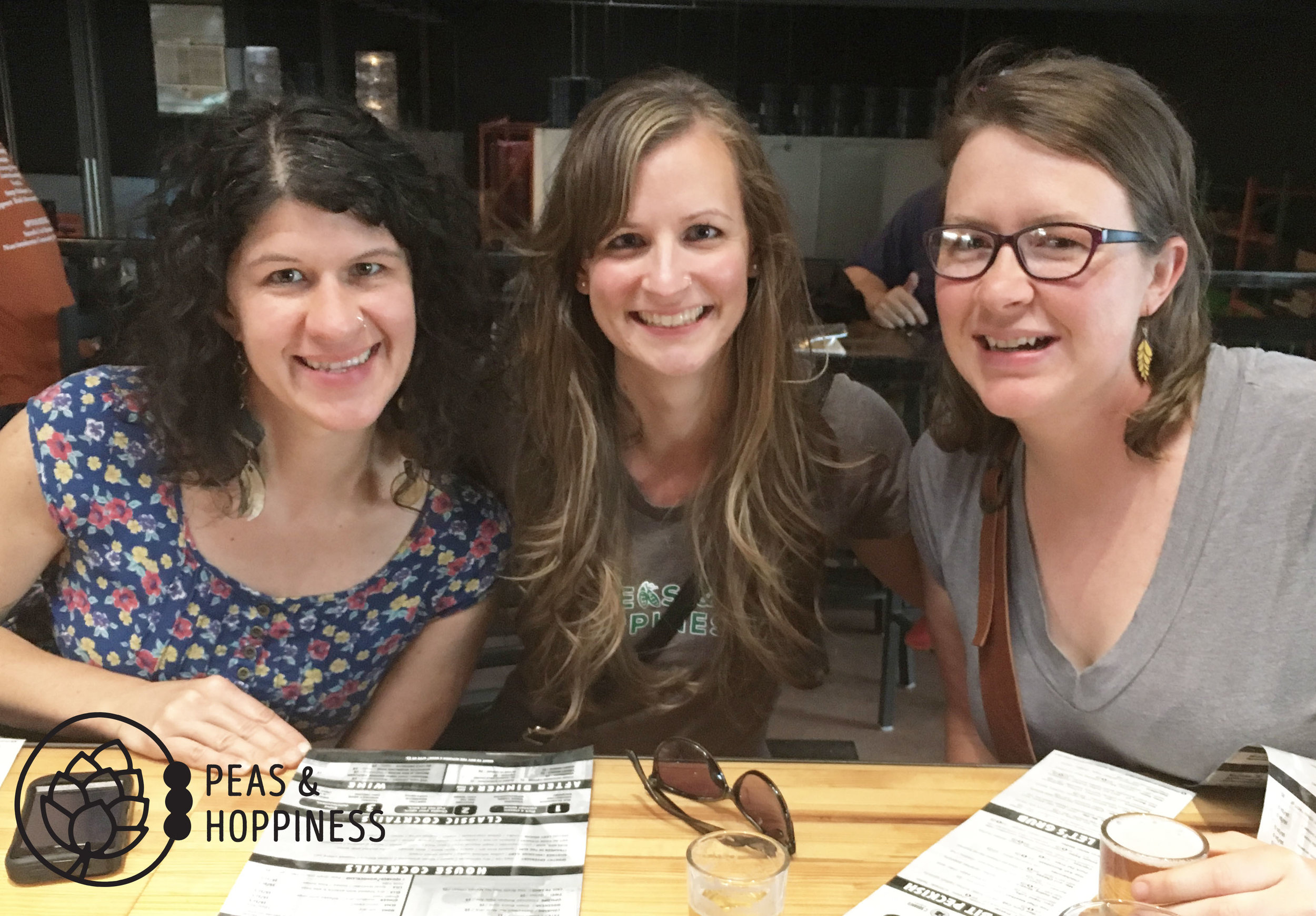
Jessica, myself, and Amanda when they came to visit me in Colorado!
The Giving Grove is a unique subset of American Agriculture – one founded on the principle of helping people grow their own food. Since their inception in 2013, the Giving Grove has partnered with community groups to plant over 145 orchards all over the Kansas City metro, ranging in size from five trees to over 100 trees. The organization provides education, but the responsibility of ongoing maintenance and management of the orchard is the work of the community group partner. These community groups are then the beneficiaries of the (literal) fruits of their labor.
“Our mission is to make healthy food accessible for low-income groups of people,” explains Amanda. “We work to empower neighborhoods to grow their own fruits, nuts, and berries.”
To create sustainable sources of food, Giving Grove focuses on planting perennial fruits. “The majority of the fruits we plant are apples, pears, and Asian pears because they have the ability to produce the greatest quantity of produce,” says Amanda. The full list of choices is even more expansive and includes cherries, figs, peaches, persimmons, and a few types of berries and nuts. They also plant native fruits, such as pawpaws which is known as the “Missouri banana” because of its resemblance to a tropical fruit.
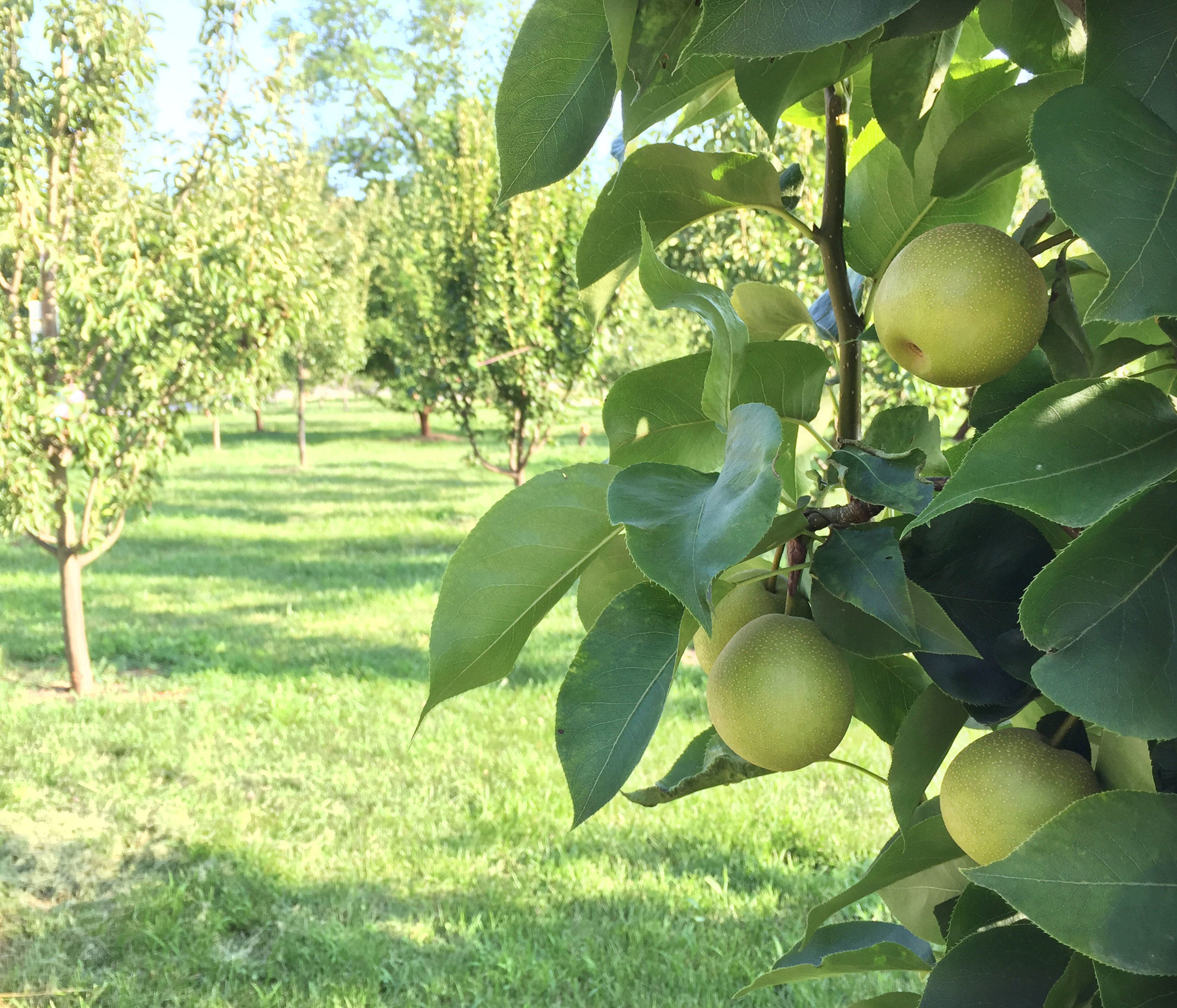
Asian Pear Tree
The specific variety of plants chosen for the orchards is based on productivity of the plant, how well it grows in the Kansas City climate, the plant’s natural disease resistance, and how much space is available.
“Everybody will say – I want to grow a Honeycrisp apple because they taste good and are expensive in the grocery store, but these are a northern apple and so don’t do well in our climate,” explains Amanda. “We don’t plant any Fuji or Gala. The Enterprise and Liberty apple are the ones we plant because they are more disease resistant in our area.”
In addition to considering climate, Amanda also stresses the importance understanding the food system is seasonal and should be treated as such. “Sustainability is being able to eat food in our region when it is produced,” she says.
Different fruits ripen at different times of the year, so strategically planting different varieties of plants can lengthen the season when produce is available. Amanda explains, “To lengthen the growing season we plant a variety of fruit trees so fruits are available at different times: cherries in June, blackberries in July, pears and apples in October and November based on variety.”
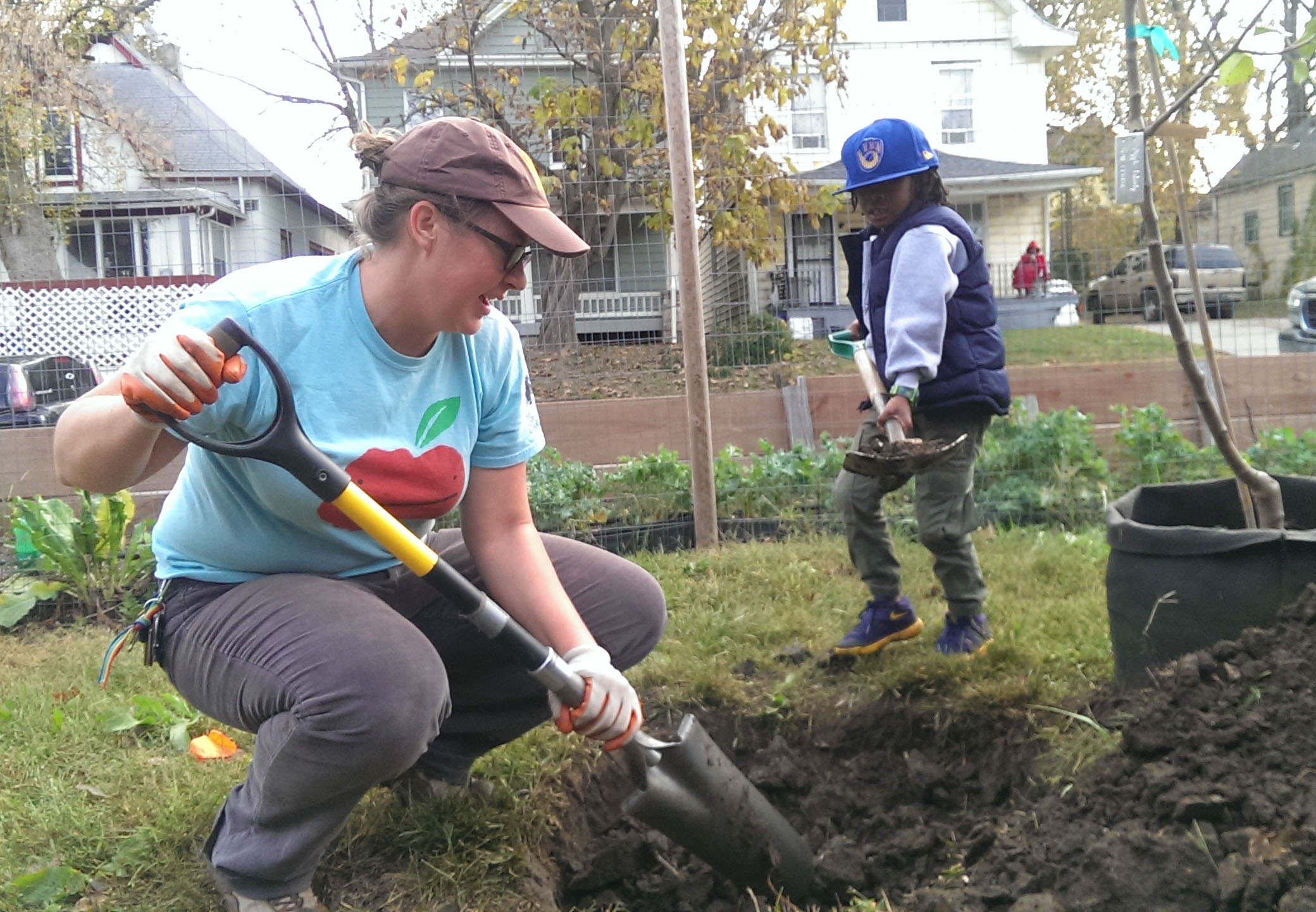
Amanda working on a planting project with a neighborhood kiddo
In terms of the orchards themselves, the Giving Grove’s model for sustainability is to put in enough up-front work so after a few years the trees will last into perpetuity. “Once the fruit tree gets established in the first five years, then it’s going to live. If it’s not maintained or actively pruned after this, it may not have the highest production but will still survive,” says Amanda.
Unfortunately, with a non-profit model, finding people to commit to the up-front effort required can be challenging. Each orchard is required to identify two people from different households to commit to care for the orchard so that if one person moves or abandons the project there is still someone to take care of the plants.
“It’s difficult to get people to commit for whom this isn’t their day job,” Amanda describes. “The reality is with this population that if people are working multiple jobs they don’t have much time to devote to it even if the orchard is right in their neighborhood.”
Another challenge is educating individuals about when to pick produce and how to use it. “If you’re a person living in poverty and you see fruit available today it might not be available tomorrow,” says Amanda. “It’s a challenge to help people take some and leave some for other people.”
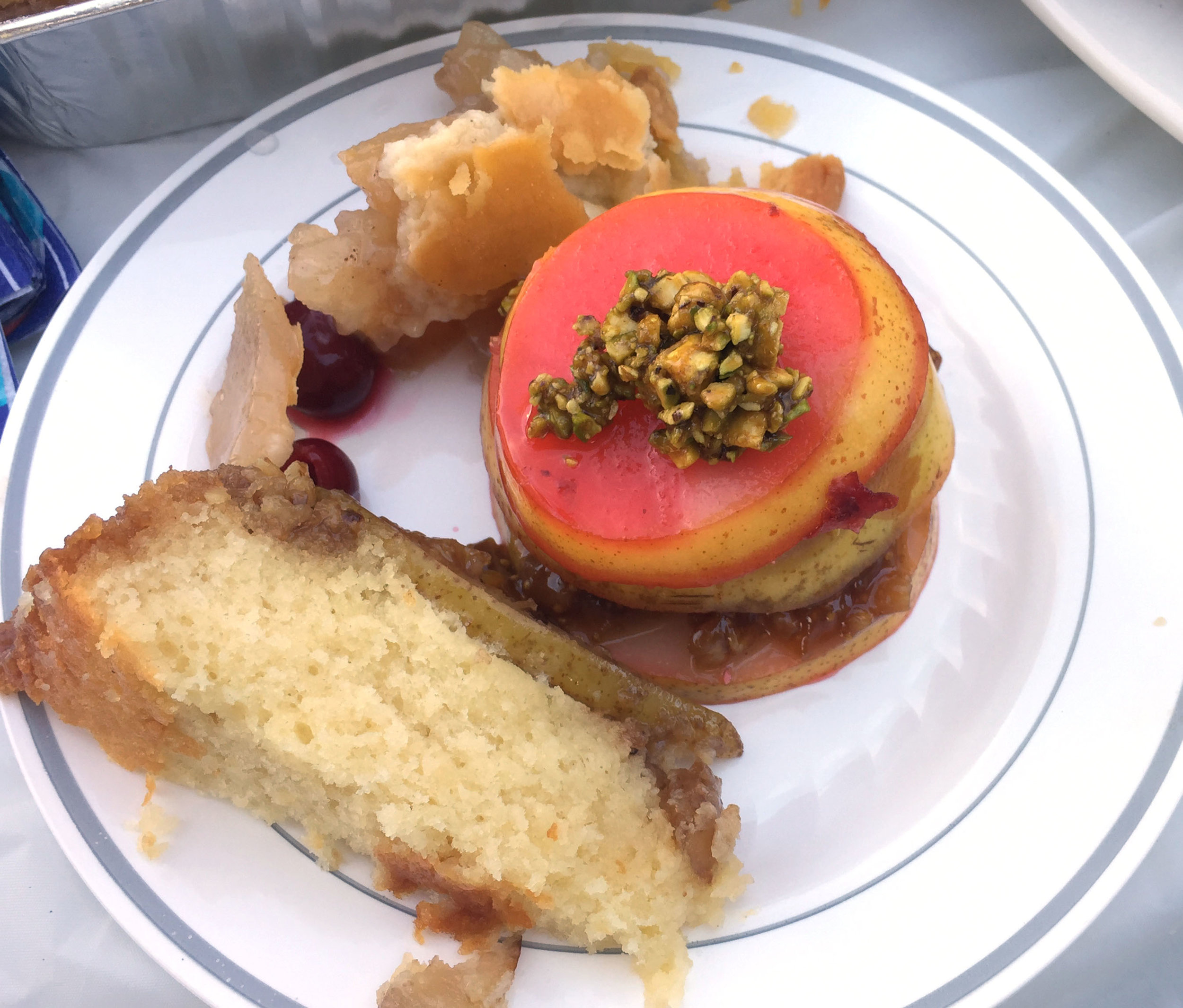
Spoils from the pear recipe contest!
This education, in fact, is part of Amanda’s role as Community Engagement Coordinator. Her job is to not only educate communities about how to grow fruit, but also to create community around the harvest as fruit comes into production.
“I love getting to interact with a lot of different people. As much as I’m teaching them about how to manage an orchard I’m also learning from them. This is probably one of my favorite things: everybody has a different story to tell.”
One of Amanda’s favorite stories is about a harvest celebration last summer at a site with a very old – and very large (about 50 feet tall!) – pear tree. “We invited all the neighbors. The orchard steward was really fabulous and decided to have a pear recipe contest. Everybody brought a bunch of different things including two different kinds of pear pies, pear upside down cake, and red pickled pears with candied nuts. People were walking by telling me stories about this tree like growing up having pear fights. This tree has been a central component of the community for so long.”
It’s easy to become passionate about home-growing quality food when talking with such a passionate person. In fact, Amanda’s organization isn’t the only one like it; they have learned a lot from organizations across the country similar to theirs, including one in Philadelphia called the Philadelphia Orchard Project. Giving Grove itself is starting to expand into new communities including St. Louis and Omaha.
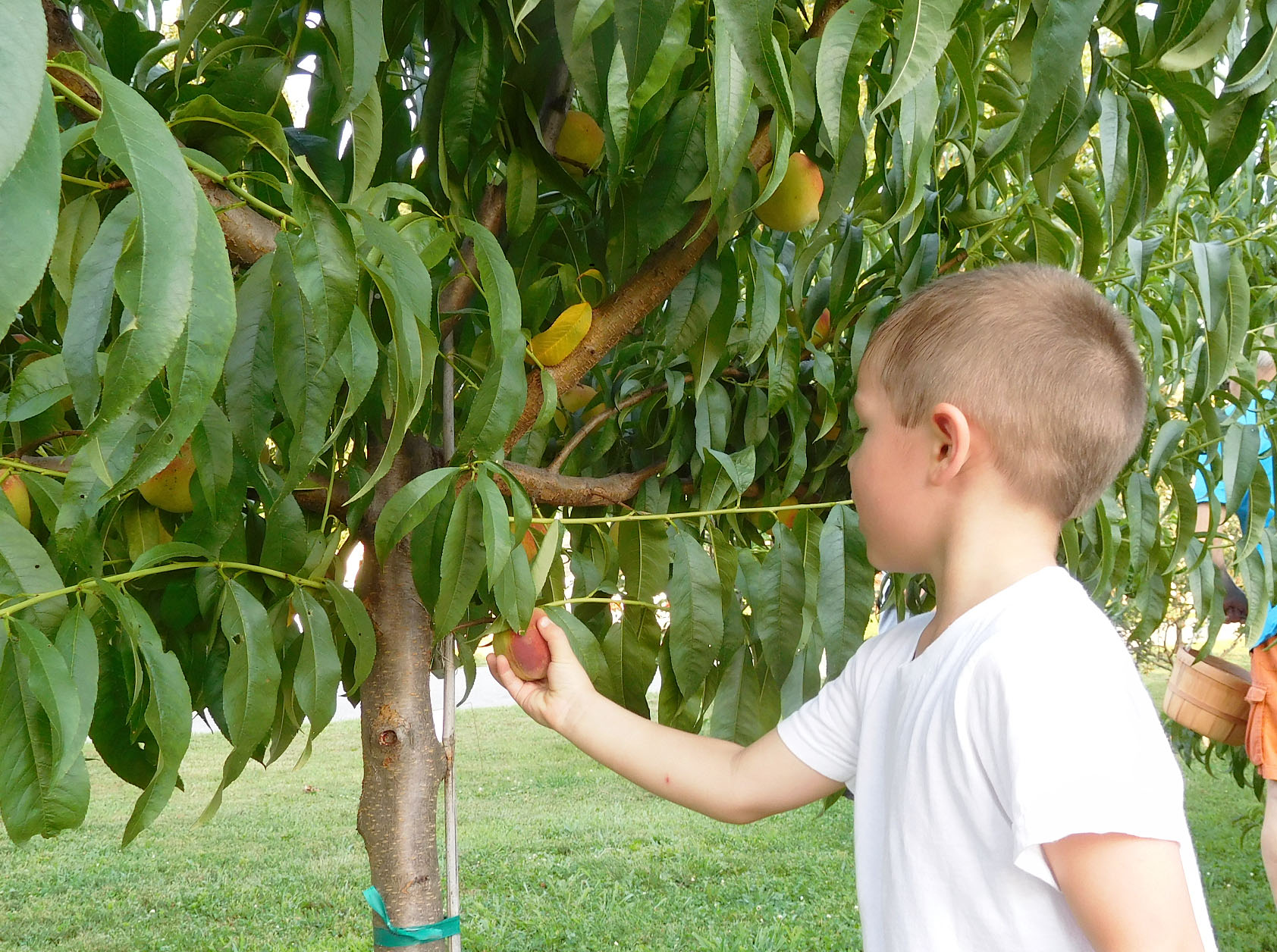
Get the kids involved! Community-based agriculture is a great way to teach children (and adults!) where their food comes from
While conventional farms become bigger and more efficient, organizations like the Giving Grove are working to bring agriculture back to urban areas. Individuals like Amanda and her colleagues are passionate not only about growing food but also helping people connect to the land and to each other.
If you want to teach your kids about where food comes from – or would like to learn for yourself, consider getting involved in a local community garden this summer.
While you’re at it, why don’t you challenge yourself to eat seasonally and thus enjoy the rhythm of nature’s clock.
With love,
Ann from Peas and Hoppiness.
Related Blog Posts
How a Global Pandemic could Change our Food Supply
What’s a CSA: Community Supported Agriculture
For more information about The Giving Grove, visit their website
Click here to find a garden in the Fort Collins, CO area
Click here to find a garden nationwide